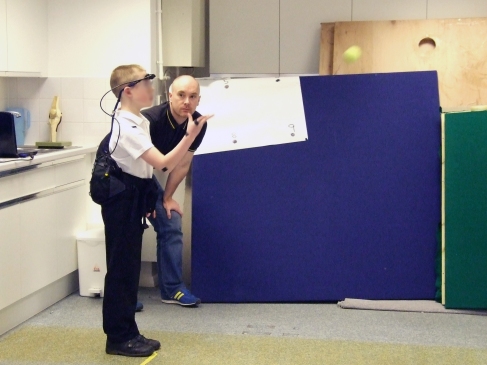The first paper of this project which looks at whether the quiet eye (QE) can distinguish between children of low and high motor coordination is finally complete and ready to go…
And the results? In a word, yes!!
We used three groups of ‘typically developing’ children in this study who tested as having either low, median or high motor coordination skill. Using and eye tracker we measured the gaze behaviour of these kids during a throwing and catching task. The QE is an important gaze strategy that has been identified by researchers (Joan Vickers & colleagues) in the field of sport psychology as the final fixation or tracking fixation on an object before the onset of a critical movement. 
In this study we found that children with high motor skill have a significantly longer targeting QE fixation before they throw compared to the other groups. This could be for a number of reasons but essentially it is believed that a longer QE duration whilst aiming increases the available information processing time for the individual to adjust to the task constraints.
Another interesting finding from this study was the difference in tracking QE duration between the groups. Again the high motor skill participants spent a longer amount of time visually tracking the ball as it travelled towards them during the catch phase of the task. It stands to good reason that if your directly looking at an object for longer you are attempting to successfully intercept, it is likely to improve your accuracy when it comes to the spatial and particularly temporal timing of your arm and hand kinematics.
This study will soon be published in full in Medicine and Science in Sport and Exercise but in the meantime the abstract can be found on pubmed: http://www.ncbi.nlm.nih.gov/pubmed/23274610
